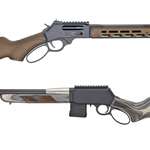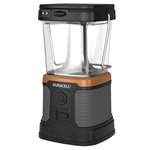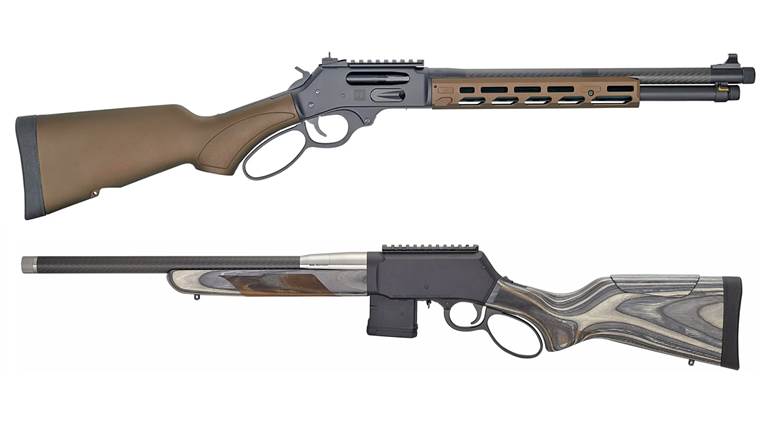
Introduced in 2009 and produced in its new manufacturing facility in Charlotte, N.C., Para USA, Inc.'s new Tactical Target Rifle (TTR) in 5.56x45 mm NATO/.223 Rem. is the company's signature entry in the crowded AR rifle market. The TTR is the result of a joint collaboration between Para and ZM Weapons, with the rifle being based on ZM Weapons' LR series of AR-pattern rifles. Its distinguishing feature is a combination modified gas-impingement/operating rod system that allows it to use a true side-folding stock assembly.
The Yankee Hill Machine Co. Rapid Deployment Stock (RDS) has five length-of-pull adjustment steps. It is manufactured from aluminum with a steel locking joint and a polymer buttplate. To fold it, the user simply pulls upward on the body of the stock against spring pressure until it unlocks. It can then be swung along the left side of the TTR's receivers. When folded, the stock blocks the TTR's bolt catch, but the non-ambidextrous safety lever on the lower receiver is still accessible. The stock is held in the folded position by spring tension from the locking block mechanism.
All controls of the TTR, such as the non-ambidextrous safety, the bolt catch and the magazine release button, are located in the familiar locations. The rifle employs standard AR-15/M16 magazines.
The TTR completely dispenses with the conventional AR's buffer assembly, relocating the recoil spring assembly above the barrel and under the handguard. In addition, it sports a short, 4-inch bolt carrier.
A redesigned gas system dubbed DIGS (for Delayed Impingement Gas System) starts with a nearly 3 1/2-inch-long gas block with a U-shaped channel that vents gas tapped from the bore forward, up, around and then back toward the action. This additional travel adds a subtle but significant delay to the time it takes gas to reach the receiver of the TTR. The result is a carbine with a cycling time more like that of a 20-inch-barreled rifle and its more distant gas port pick-up point.
The 11 1/4-inch Op-Rod is affixed to the top of the bolt carrier in place of a traditional gas key. The Op-Rod extends forward under the handguard and cups over the TTR's 4.5-inch-long gas tube, channeling the gas back directly into the bolt carrier assembly and out additional gas ports cut into the side of its body through the open ejection port. The TTR's recoil spring assembly wraps around the Op-Rod.
To accommodate the Manifold Injector System (MIS), the TTR's flat-top upper receiver, a proprietary unit, is taller and thicker in its upper rail portion than a standard AR upper. In addition, the TTR features a beefed-up charging handle with an integral gas channel that is designed to vent any excess gas out of the action at the right rear portion of the handle.
A removable top rail retained by a spring-loaded plunger allows for disassembly. Once the top rail cover is removed, the recoil spring assembly can be disengaged from the Op-Rod, allowing the user to then withdraw the bolt carrier assembly out from the rear of the upper receiver like any other AR.
The TTR sports an uninterrupted strip of Picatinny rail along its top and comes standard with a set of folding Yankee Hill back-up iron sights. The 16.5-inch barrel is chrome-lined, does not feature the M4-contour cut and is topped off with a Yankee Hill Phantom flash suppressor. The pistol grip is a Command Arms Accessories G-27 grip with a storage compartment.
The rifle is offered in three folding-stock configurations. We received the TTR variant equipped with the partial rail and the folding stock for testing and evaluation. First impressions of the TTR were good, with testers noting its excellent fit and finish, from its deep-black anodized 7075-T6 forged aluminum receivers to its gray phosphated barrel.
We fitted the TTR with EOTech's new XPS2-0 holographic sight and G23.FTS magnifier unit on a flip-to-side mount and headed out to the range with a selection of Black Hills, Federal and Winchester loadings. There were no malfunctions during the course of a few hundred rounds. The TTR showed a preference for the 43-gr. load tested.
We noted that the recoil impulse of the TTR was quite pleasant, and the rifle easily stayed on target during rapid-fire strings. We also noted the TTR's fore-end heated quickly at the front where it came into contact with the long gas block. Also, the bolt catch required a great deal of force to operate.
Like many of the products from Para USA, the Tactical Target Rifle is a special breed: a semi-automatic rifle with the familiar controls of an AR but with a cleaner-running gas system and a true folding stock for the ultimate in portability and compactness. Given those rare traits, and its relatively competitive price, the TTR simply cannot be overlooked.
Manufacturer: Para USA, Inc.; (704) 930-7600; Para-usa.com
Cailber: 5.56x45 mm NATO (.223 Rem.)
Action Type: Delayed impingement gas system (DIGS), semi-automatic, center-fire rifle
Receiver: 7075-T6 aluminum
Barrel: Phosphated, chrome lined, 16½"
Rifling: 1:9" RH twist
Magazine: Detachable box, AR-15/M16
Sights: Picatinny rail, Yankee Hill folding back-up iron sights
Trigger Pull: Single-stage, 7 lbs.
Stock: Aluminum and steel RDS collapsible/folding unit: length of pull, 12" to 15"; drop at heel, 2¼"; drop at comb, 2¼"
Overall Length: 35½" to 38¼"
Weight: 7 lbs., 12 ozs.
Accessories: Owner's manual, magazine
Suggested Retail Price: $2,397














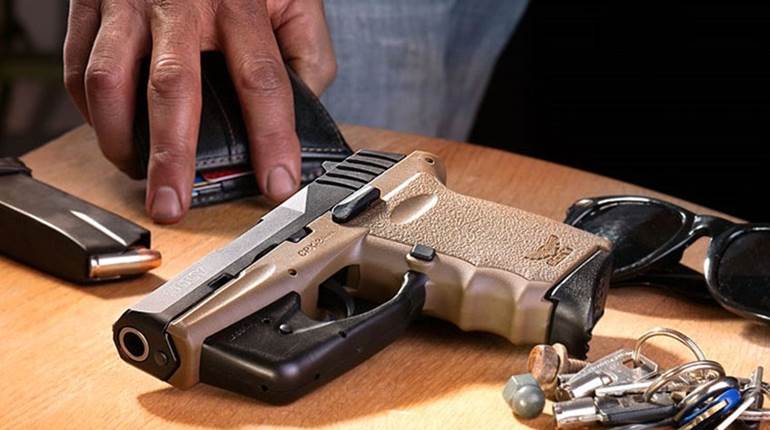
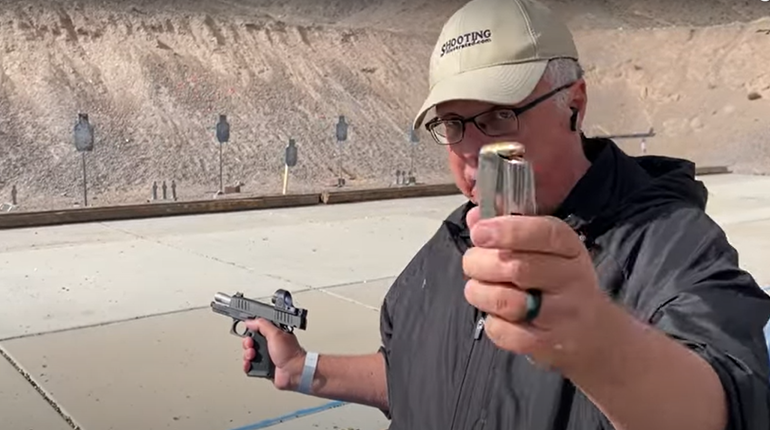



![Auto[47]](/media/121jogez/auto-47.jpg?anchor=center&mode=crop&width=770&height=430&rnd=134090788010670000&quality=60)
![Auto[47]](/media/121jogez/auto-47.jpg?anchor=center&mode=crop&width=150&height=150&rnd=134090788010670000&quality=60)



